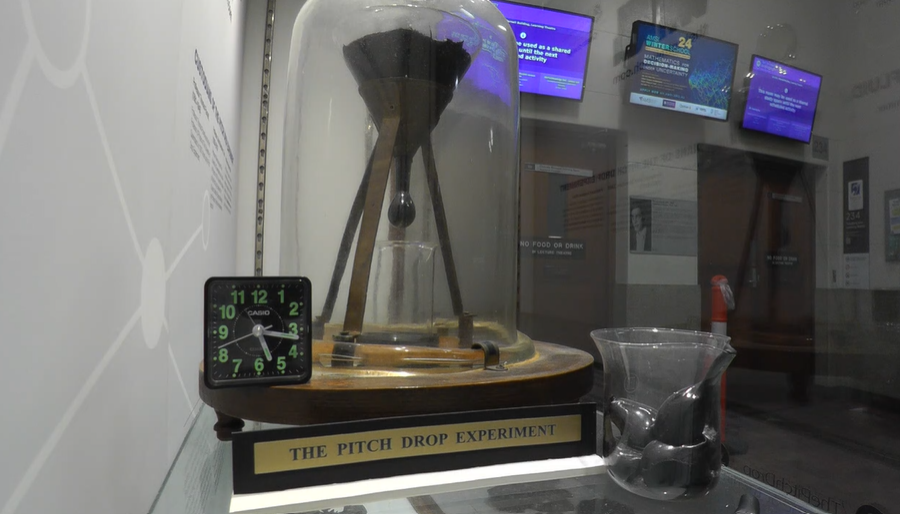Slow Science in the Busy Modern Society
Lately, every time we hear news from the tech industry, it feels overwhelming, doesn’t it? Recently, Elon Musk of Tesla and Yann LeCun of Meta had a debate on X (formerly Twitter), and OpenAI announced the development of a new AGI model, among other continuous issues. It’s really overwhelming, isn’t it? In this fast-paced environment, what value can “slow science” hold? Today, I want to share the story of this “slow science.”
Pitch Drop Experiment: The Truth Waiting for 100 Years
In 1927, Thomas Parnell, a physics professor at the University of Queensland in Australia, started the Pitch Drop Experiment. Pitch looks solid but is actually a highly viscous fluid. This experiment observes the pitch falling through a funnel, and it takes about 7-9 years for a single drop to fall. Really slow, right?

This experiment revealed that the viscosity of pitch is 250 billion times greater than water. It also showed that the speed at which the pitch falls is slower than the movement of the Australian continent due to mantle convection.
The Pitch Drop Experiment is considered a symbol of scientific curiosity and patience, emphasizing the necessity and importance of experiments that last a very long time. It also contributes to raising interest in science among students and the public.
Moreover, this experiment remains a prime example of how important it is to explore basic scientific questions over time.
400 Years of Sunspot Observation
The study of sunspot observation began in 1613 with Galileo Galilei and continues to this day. Sunspots are cooler areas on the surface of the sun where explosions occur, resulting in solar winds. Through 400 years of data, scientists analyze the impact of sunspots on Earth’s climate.


The sunspot observation experiment is a significant research topic in astronomy and earth science. It helps understand the sun’s activity cycles, analyze the effects on Earth, and plays a crucial role in practical applications like space weather forecasting.
Sunspot observation research stimulates scientific curiosity and contributes to understanding natural phenomena that directly affect our lives.
The Aesthetics of Slowness: Sloth Research
Sloths move about 36 meters a day, making them very slow animals. Scientists use GPS backpacks and wireless collars to track sloth movements to study their physiology and behavior.
Sloths are of great interest due to their slow lifestyle and unique physiological characteristics. Their research aids in ecological and physiological understanding and makes significant contributions to conservation efforts.
Understanding sloths helps identify their ecological roles and is crucial for habitat protection and maintaining biodiversity, making this research highly expected to contribute significantly to sloth conservation.
The Value of Slow Science
Slow science means conducting scientific research with enough discussion on social impacts in an era of rapid technological advancement. This approach deepens research and produces more reliable results.
Conclusion
How about living slowly this weekend? Experiencing the value of slow science in daily life, living more leisurely, and slowly might change our lives. Like sloths, not stressing over unimportant matters and just living life.
Slow science can be more than a research method; it can become a philosophy of life. Understanding the value and importance of slow science and practicing living slowly in daily life can lead to positive changes. Start practicing now!
